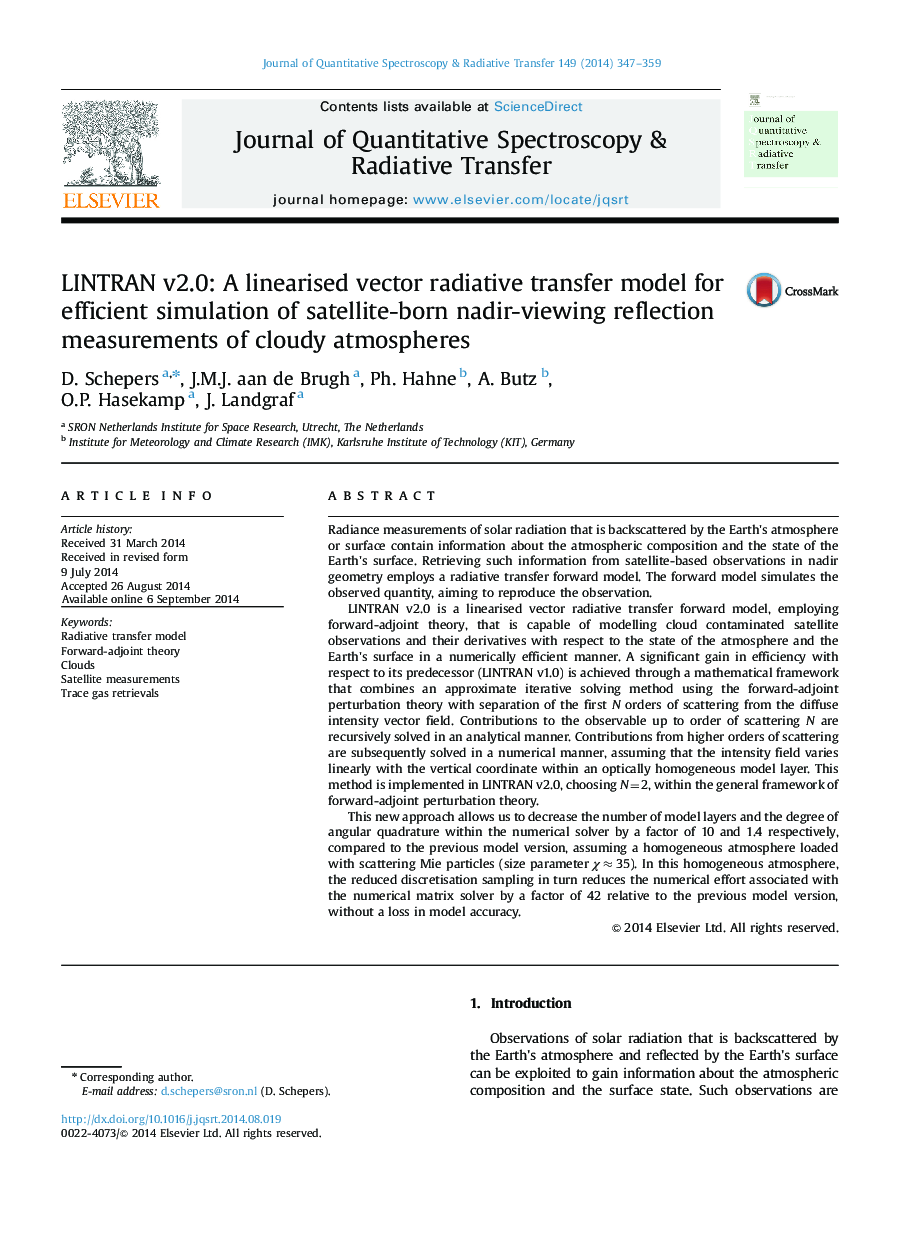| کد مقاله | کد نشریه | سال انتشار | مقاله انگلیسی | نسخه تمام متن |
|---|---|---|---|---|
| 5428274 | 1508666 | 2014 | 13 صفحه PDF | دانلود رایگان |

- We combine successive orders of scattering with forward-adjoint perturbation theory.
- We analytically calculate double scattering intensities in cloudy atmospheres.
- This reduces numerical effort 42 times assuming pure Mie scattering.
Radiance measurements of solar radiation that is backscattered by the Earth׳s atmosphere or surface contain information about the atmospheric composition and the state of the Earth׳s surface. Retrieving such information from satellite-based observations in nadir geometry employs a radiative transfer forward model. The forward model simulates the observed quantity, aiming to reproduce the observation.LINTRAN v2.0 is a linearised vector radiative transfer forward model, employing forward-adjoint theory, that is capable of modelling cloud contaminated satellite observations and their derivatives with respect to the state of the atmosphere and the Earth׳s surface in a numerically efficient manner. A significant gain in efficiency with respect to its predecessor (LINTRAN v1.0) is achieved through a mathematical framework that combines an approximate iterative solving method using the forward-adjoint perturbation theory with separation of the first N orders of scattering from the diffuse intensity vector field. Contributions to the observable up to order of scattering N are recursively solved in an analytical manner. Contributions from higher orders of scattering are subsequently solved in a numerical manner, assuming that the intensity field varies linearly with the vertical coordinate within an optically homogeneous model layer. This method is implemented in LINTRAN v2.0, choosing N=2, within the general framework of forward-adjoint perturbation theory.This new approach allows us to decrease the number of model layers and the degree of angular quadrature within the numerical solver by a factor of 10 and 1.4 respectively, compared to the previous model version, assuming a homogeneous atmosphere loaded with scattering Mie particles (size parameter Ïâ35). In this homogeneous atmosphere, the reduced discretisation sampling in turn reduces the numerical effort associated with the numerical matrix solver by a factor of 42 relative to the previous model version, without a loss in model accuracy.
Journal: Journal of Quantitative Spectroscopy and Radiative Transfer - Volume 149, December 2014, Pages 347-359